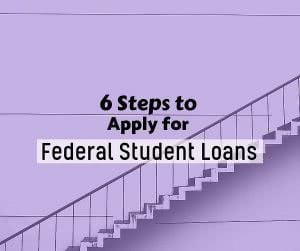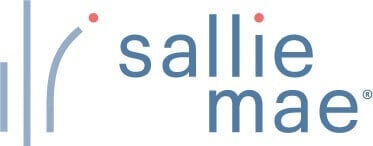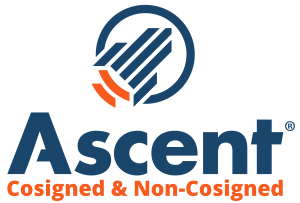 College fees have increased a lot over the past few years; most families need a little bit of financial help to cover the costs. Statistics show that most students who attend college have borrowed money to cover part of their college tuition. When it comes to student loans, it’s vital to know your options and what you’re getting into, before you apply for federal student loans or private ones.
College fees have increased a lot over the past few years; most families need a little bit of financial help to cover the costs. Statistics show that most students who attend college have borrowed money to cover part of their college tuition. When it comes to student loans, it’s vital to know your options and what you’re getting into, before you apply for federal student loans or private ones.
Understanding the different types of loans available, as well as their terms and conditions, will help you make more informed decisions.
Step 1 – Gather All Your Documents
All lenders, whether federal or private, will ask you to submit some basic information before approving your loan application. Keeping this information ready in advance will help you get through the application process faster.
These are some of the documents and information you will need to keep ready when filling the FAFSA (Free Application for Federal Student Aid):
Documents You’ll Need:
- Date of birth
- Social Security Number
- Contact details, including phone number and current address
- List of up to 10 schools you are attending with each school’s contact details and the major you intend pursuing
- Your parents’ tax returns and other tax information
- Your tax returns if you’re an independent student and you file taxes
- Any untaxed income such as retirement savings plan or child support
- Assets such as businesses or investments in your name or your parents’ names
- Any gift aid you’ve received by way of scholarships or grants

Step 2 – Fill Out The FAFSA
This is the single most important step towards earning financial aid. The FAFSA qualifies you for federal loans, grants, scholarships, and work-study programs. Even if you don’t think you’ll earn anything—apply anyway.
It’s worth filling out the FAFSA even if you don’t think you’re eligible for federal financial aid. You may be offered a direct unsubsidized loan through your college and you will need the FAFSA to accept it. Many outside scholarship opportunities also require you to have filed the FAFSA to demonstrate need.
The FAFSA comes out in October every year. Complete and submit the application as early as possible to maximize your funding.
Most important – Make sure you submit all the information asked for in the FAFSA. Incomplete applications are kept on hold and you may lose out on financial aid that you otherwise qualify for.
Step 3 – Review your Student Aid Report
Within about two weeks after submitting the FAFSA, you will receive your Student Aid Report or SAR. The SAR gives you a summary of all the information you submitted on the FAFSA. It’s important to review it thoroughly to make sure all the information is correct. If there are any discrepancies, edit your FAFSA with the correct details as quickly as possible. Financial aid is usually allotted on a first come first served basis so time is of essence.
Step 4 – Review Your Financial Aid Letter
All the schools you listed on the form will receive a copy of your application. Schools that accept your admission application will review your FAFSA and prepare a personalized financial aid package for you. They will then send you a financial award letter with details about the different types of aid you qualify for. It will inform you if you qualify for grants, scholarships, work-study opportunities, or any other free aid.
The financial aid letter also includes information about total cost of attendance, Expected Family Contribution, and federal student loans.
Review and compare all the financial aid letters you receive to determine which works best for you. Remember, you don’t have to accept all the aid being offered to you. Take only what you need.
Follow this order when accepting the financial aid offered to you:
- Look for scholarships and grants – You get to keep all the money and you don’t have to worry about paying interest either.
- Do a work-study – With work-study, you work for your money. It means you’ll have less time to study and party. It’s worth it though as it reduces the amount you have to borrow.
- Apply for federal student loans – Yes, you will have to return all the money you borrow, and with interest too. However, if you do need to borrow money to cover your college tuition, this is your best option. Federal student loans have some of the lowest interest rates along with flexible repayment options.
Step 5 – Talk to Your School’s Financial Aid Office
Different schools have different formalities for disbursing the financial aid or even receiving funds. Speak to your school’s financial aid office to understand what you need to do to receive the funds.
All borrowers are required to complete entrance counseling and sign a master promissory note before receiving any funds.
Step 6 – Explore Private Student Loans if You Need Additional Funds
If you apply for federal student loans and other financial aid and it doesn’t cover the gap in your funds, you may need to take private student loans. Consider this as your last option and only if absolutely necessary. Private student loans tend to have higher interest rates, and more inflexible terms and conditions.
It’s relatively easy to get a private student loan if you have good credit. If you don’t, you may need to get a credit-worthy cosigner to get a private loan.
Lenders vary with regards to interest rates and terms and conditions. Make sure to compare multiple private lenders so you can choose one that offers the most favorable terms.
Last but not least, be smart about your student loans. Borrow only what you need and nothing more. Understand the terms and conditions so you don’t get a nasty surprise when it’s time to repay the loans.
Use College Raptor to discover personalized college matches, cost estimates, acceptance odds, and potential financial aid for schools around the US—for FREE!
| Lender | Rates (APR) | Eligibility | |
|---|---|---|---|
 |
5.34%-15.96%* Variable
3.99%-15.61%* Fixed
|
Undergraduate and Graduate
|
VISIT CITIZENS |
 |
4.92% - 15.08% Variable
3.99% - 15.49% Fixed
|
Undergraduate and Graduate
|
VISIT SALLIE MAE |
 |
4.50% - 17.99% Variable
3.49% - 17.99% Fixed
|
Undergraduate and Graduate
|
VISIT CREDIBLE |
 |
6.00% - 13.75% Variable
3.99% - 13.75% Fixed
|
Undergraduate and Graduate
|
VISIT LENDKEY |
 |
5.50% - 14.56% Variable
3.69% - 14.41% Fixed
|
Undergraduate and Graduate
|
VISIT ASCENT |
 |
3.70% - 8.75% Fixed
|
Undergraduate and Graduate
|
VISIT ISL |
 |
4.99% - 16.85% Variable
3.47% - 16.49% Fixed
|
Undergraduate and Graduate
|
VISIT EARNEST |
 |
5.00% - 14.22% Variable
3.69% - 14.22% Fixed
|
Undergraduate and Graduate
|
VISIT ELFI |


